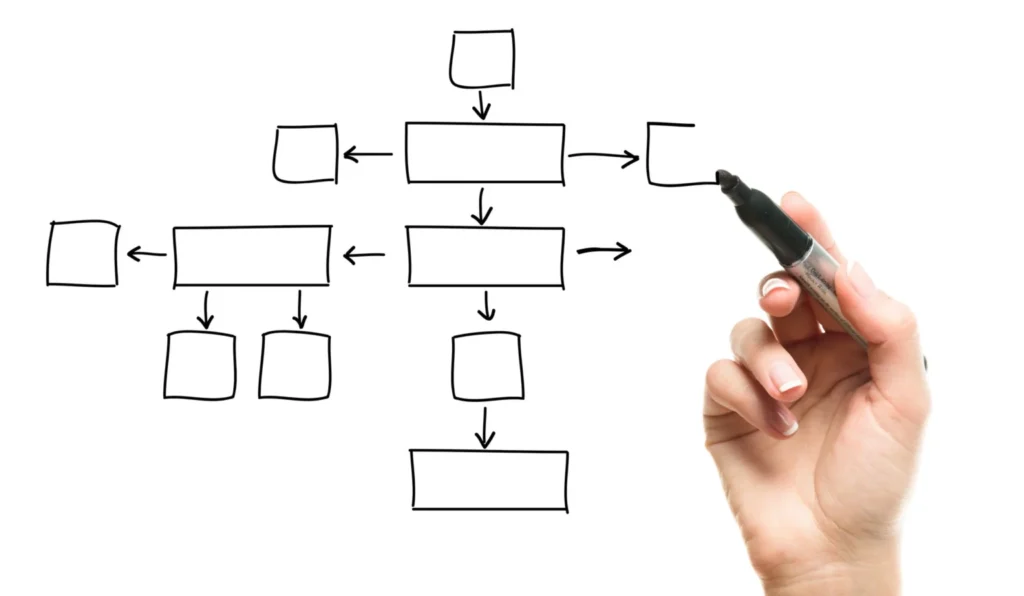What’s the difference between a project that soars and one that stumbles? Often, it’s how well everything is integrated and communicated.
PMI reports that poor communication is a leading cause of project failure, while effective communication can increase success rates by 20%.1
That’s why this blog will explore key strategies and tools for mastering project integration and communication.
Let’s find out how to keep your projects aligned, on track, and on budget!
What is Project Integration Management?
Project Integration Management is the process of coordinating all aspects to ensure they work together seamlessly. It involves unifying diverse project elements—scope, time, cost, quality, resources, communication—into a cohesive plan that drives successful execution.
This process is essential for maintaining alignment between goals and organizational objectives, preventing silos, and ensuring that every part of the project supports the whole.
Key Stakeholders in the Integration Process

Internal Stakeholders
Project Sponsor: The Project Sponsor is the strategic anchor for project alignment. They secure resources, set expectations, and ensure the project aligns with organizational goals. Beyond funding, they approve milestones, resolve high-level conflicts, and regularly review progress with key stakeholders.
A proactive, engaged sponsor is critical; without their oversight, projects can drift off course, leading to wasted resources and potential failure. Their decisive actions ensure the project delivers measurable value to the organization.
Project Team Members: Team members are the driving force behind execution. Their contributions are vital—each member brings skills that must align with the project’s goals.
Responsibilities include delivering on assigned tasks, collaborating cross-functionally to integrate diverse workstreams, and actively communicating progress and challenges.
Influential team members don’t just complete tasks; they anticipate needs, adapt to changes, and support their peers. In cross-functional collaboration, they must break down silos, ensuring that all parts of the project move in sync toward successful completion.
Senior Management: Senior management provides the strategic oversight that shapes the project’s direction. Their role is to ensure that the project aligns with broader organizational goals and that resources are effectively allocated.
Their decisions on priorities, risk management, and resource allocation directly impact the integration process. Strong, informed guidance from senior management ensures that the project stays aligned with the company’s strategic vision, avoids bottlenecks, and adapts swiftly to changes.
Without their proactive involvement, integration can falter, leading to misaligned objectives and wasted efforts.
External Stakeholders
Clients or Customers: Start by clearly defining requirements and maintaining transparency throughout the project. Regular updates ensure clients know about progress, challenges, and any upcoming changes.
Actively seek their feedback at the end and throughout key phases to ensure alignment with their vision. Address concerns promptly and manage scope creep by setting clear boundaries. Satisfied clients are engaged clients!
Vendors and Suppliers: Vendor and supplier alignment keeps your project on track. Set clear expectations and enforce strict timelines—anything less invites delays.
Regular status checks are non-negotiable; you must ensure their deliverables align perfectly with project needs. Poor coordination here leads to cascading failures across the project.
Keep them accountable and proactive in resolving issues. Your job is to guarantee they’re locked in with the project’s pace and quality standards—no excuses!
Regulatory Bodies: Regulatory bodies set the standards you must meet, and failure to comply can result in severe penalties, delays, or even project shutdowns. Your responsibility is to ensure that all project activities align with legal requirements from the outset.
This involves staying updated on relevant regulations, integrating compliance checks into your processes, and maintaining clear documentation. Proactive engagement with regulatory bodies ensures your project stays on track and avoids costly legal setbacks.
Read More: Project Management Guide ✅ 28X Savings on Your Next Project
Communication Channels for Project Integration Management

Set Up Plans
Start by creating a communication plan that specifies roles, responsibilities, and timelines. Use Mirorim to centralize discussions and updates, ensuring everyone can access the latest information.
Regular check-ins, status reports, and automated alerts help maintain alignment and prevent miscommunication. The objective is to ensure every stakeholder is informed and engaged. That keeps the project on track and avoids unnecessary delays or misunderstandings.
Consider Escalation Procedures
Escalation is about timing and judgment. You escalate issues when they threaten project objectives, timelines, or budgets—before they become critical. Start by addressing the problem at the team level. If unresolved, escalate to higher management, providing clear context and potential solutions.
Examples include delays caused by vendor issues or scope changes that impact key deliverables. Involve senior management when decisions require their authority or when project risks exceed your control. Proper escalation keeps small issues from becoming project-threatening problems.
The 7 Steps of Project Integration Management
Step 1: Create a Project Charter

This charter is the backbone of your project—defining objectives, scope, and authority. It aligns stakeholders and gives you the power to drive the project forward.
A weak charter leads to confusion, misaligned goals, and a lack of support. Make it clear, decisive, and comprehensive; this is your blueprint for success, setting the stage for everything that follows.
Step 2: Develop a Project Management Plan
The Project Management Plan is your tactical roadmap. It defines the project’s scope, schedule, and objectives with precision. This document is where you detail what needs to be done, by whom, and when.
Every aspect of the project hinges on this plan—it’s your guide for resource allocation, risk management, and stakeholder communication.
A well-crafted plan prevents scope creep, mitigates risks, and keeps the team aligned. Make it comprehensive and clear; it’s the blueprint for executing the project without deviations.
Step 3: Direct and Manage Project Work
Here is where execution meets accountability. This phase demands precise oversight—coordinating tasks, managing teams, and solving problems in real-time.
You must be decisive and address issues immediately to prevent derailments. Poor management leads to delays, budget overruns, and subpar results. Your vigilance and proactive adjustments keep the project on target and ensure successful delivery.
Step 4: Manage Project Knowledge
Managing project knowledge is about capturing insights and using them to drive smarter decisions. Don’t let valuable lessons slip through the cracks—document successes, failures, and everything in between.
This knowledge isn’t just for the current project; it’s an asset for future initiatives. Share it with your team to prevent repeated mistakes and reinforce what works.
The goal is to create a continuous learning loop that enhances project efficiency and outcomes. Effective knowledge management turns experience into a strategic advantage.
Step 5: Monitor and Control Project Work
This step is about maintaining a tight grip on progress and performance. This step requires constant vigilance—track every milestone, budget item, and deliverable against your plan. If something veers off course, act immediately to correct it.
Use data-driven insights to make informed adjustments and ensure the project stays on target. The key is to catch issues before they become problems. Effective monitoring isn’t just about tracking; it’s about steering the project to a successful conclusion.
Step 6: Perform Integrated Change Control
Every change request must be evaluated rigorously—assess its impact on scope, schedule, and budget before making any decisions. Implement a clear process for reviewing, approving, or rejecting changes and ensure that all stakeholders are informed and aligned.
Document every change and its rationale to maintain transparency and control. The goal is to adapt without losing focus, ensuring that changes improve the project rather than derail it.
Step 7: Close Out the Project
Closing out the project is where you tie up all loose ends and ensure nothing is left unfinished. This step confirms that all project deliverables are complete to the required standards and that stakeholders are satisfied.
Proper documentation is crucial—record lessons learned, finalize all contracts, and hand over project deliverables. This isn’t just about wrapping up; it’s about securing the project’s legacy and ensuring the groundwork is in place for future success.
A thorough closeout guarantees that the project’s benefits are fully realized.
Best Practices for Interactions During Project Integration
1. Regular Stakeholder Meetings

The ideal frequency depends on the project’s complexity, but weekly or bi-weekly meetings are typically effective. Keep the format focused—start with a quick status update, followed by a review of key milestones, risks, and next steps.
The agenda should be clear and concise, with specific goals for each meeting. Ensure every stakeholder has a voice, but keep discussions on track. Effective meetings keep everyone aligned, address issues early, and maintain project momentum.
2. Collaborative Tools
Mirorim enhances communication efficiency during project integration by centralizing interactions and keeping everyone on the same page. It streamlines task updates, file sharing, and real-time feedback, ensuring that all stakeholders can access the latest information without the clutter of multiple platforms.
Mirorim minimizes the risk of miscommunication and keeps your team aligned, allowing for smoother collaboration and more effective decision-making throughout the project. This tool supports clear, consistent communication, which is crucial for successful integration.
3. Feedback Culture
Start by encouraging open, honest feedback from all team members and stakeholders—make it clear that constructive input is valued and expected. Use structured methods like surveys, regular check-ins, and retrospective meetings to gather insights.
Once feedback is collected, act on it swiftly. Identify patterns, address issues, and implement changes where necessary. The goal is to create a feedback loop that resolves immediate concerns and drives ongoing improvements throughout the project.
Challenges and How to Overcome Them
Common Pitfalls in Stakeholder Interactions
Stakeholder misalignment can derail your project. For example, Health Catalyst struggled with fragmented communication across departments, leading to disjointed execution.
The solution?
Use emotional intelligence2 to assess stakeholder commitment and tailor communication to each group. Conduct regular, focused meetings to align expectations and prevent misunderstandings.
Don’t wait for conflicts to arise—proactively address concerns through clear, direct communication.
Handling Conflicts
Conflicts are inevitable in complex projects, as seen in the University of Melbourne’s integration efforts. To tackle conflicts immediately, acknowledge the issue, facilitate open dialogue, and mediate to find common ground.
Focus on aligning all parties with the project’s objectives to keep the team moving forward. Remember, unresolved conflicts can spiral into bigger problems, threatening project success.
Maintaining Alignment
In Agile and hybrid environments, maintaining alignment is a constant challenge. Optimus SBR succeeded by implementing continuous communication loops and regular stand-ups. Ensure transparency by keeping everyone informed of evolving priorities.
Adaptability is key—be ready to adjust plans and strategies as the project progresses. Keeping all stakeholders aligned requires relentless focus and flexibility.
Case Study of Effective Project Integration Management
1. Health Catalyst: Overcoming Tool Limitations

Initial Challenges: Health Catalyst3, a healthcare data and analytics company, struggled with inadequate project management tools that resulted in poor resource management and limited data insights. This situation created bottlenecks in interdepartmental communication and inconsistencies in project delivery.
Strategies Used: The company adopted a software solution for resource forecasting that facilitated better communication between departments and provided the necessary data insights for consistent project delivery. The integration was carefully managed to align with the company’s objectives and stakeholder expectations.
Outcomes: Health Catalyst saw significant improvements in project consistency, resource data insights, and forecasting abilities, leading to smoother operations and better alignment with strategic goals.
Key Takeaways: This case highlights the importance of selecting the right tools for project integration management. For similar projects, integrating scalable tools that provide actionable insights is critical for overcoming challenges and ensuring consistent project success.
Read More: Healthcare Project Management: How to Minimize Medical Errors & Save Lives
2. Optimus SBR: Extending Forecasting Horizons
Initial Challenges: Optimus SBR4, a professional services provider, dealt with outdated project management tools that failed to provide real-time revenue forecasts. These tools limited the company’s ability to make informed decisions and manage projects effectively.
Strategies Used: The transition to Mavenlink enabled better data-driven decision-making, improved remote work management, and 50% extension of the company’s forecasting horizon. The integration process was meticulously planned to ensure seamless adoption and maximize tool benefits.
Outcomes: The shift to Mavenlink led to more accurate financial forecasting and improved project management efficiency, enhancing the company’s ability to meet client expectations.
Key Takeaways: The case demonstrates the value of integrating advanced tools to improve forecasting and decision-making. Proper planning and alignment with project objectives are crucial for successful tool integration in similar projects.
3. University of Melbourne: Large-Scale Program Integration

Initial Challenges: The University of Melbourne5 faced the complex challenge of managing a large-scale program involving multiple interrelated projects. The integration process required close coordination across various departments and stakeholders, with a focus on aligning project goals with the university’s strategic objectives.
Strategies Used: The university implemented a structured project integration management approach that involved continuous engagement with senior management and stakeholders. This strategy ensured that all project elements were aligned with the overarching goals and that any issues were addressed promptly.
Outcomes: The program successfully integrated various projects, aligning with the university’s strategic objectives. The structured approach facilitated smooth communication and coordination across departments, ensuring the program was delivered on time and within budget.
Key Takeaways: This case underscores the importance of structured project integration management, especially in large-scale programs. Continuous stakeholder engagement and alignment with strategic goals are critical for ensuring project success in complex environments.
Conclusion
To wrap it up, successful project management hinges on a few key pillars. First, effective communication isn’t just a bonus—it’s a necessity. With projects boasting strong communication strategies being 20% more likely to succeed, setting up clear, consistent channels should be a top priority.
Next, structured integration is your roadmap to success. Engaging stakeholders continuously and aligning every step with strategic objectives ensures your projects stay on course and deliver real value.
Don’t forget the human factor: stakeholder management. Whether it’s resolving conflicts or keeping everyone aligned, handling interactions with care can make or break your project’s progress.
Finally, proactive problem-solving is your safety net. By addressing issues early, adapting in Agile or hybrid environments, and refining your processes, you’ll keep your projects running smoothly and on target.
What’s Next?
To stay ahead in the ever-evolving field of project management, you must be aware of emerging trends. Explore our latest insights in 8 Project Management of 2025 to ensure your projects remain aligned with upcoming advancements.
References
- Rajkumar, S. (2010). Art of communication in project management. Paper presented at PMI® Research Conference: Defining the Future of Project Management, Washington, DC. Newtown Square, PA: Project Management Institute. https://www.pmi.org/learning/library/effective-communication-better-project-management-6480 ↩︎
- Freedman, J. (2020, December 2). Case Study: Emotional Intelligence for People-First Leadership at FedEx Express. Six Seconds. https://www.6seconds.org/2014/01/14/case-study-emotional-intelligence-people-first-leadership-fedex-express/ ↩︎
- 300 Case Studies – Highlighting Our Transformational Clients – Health Catalyst. (n.d.). Health Catalyst. https://www.healthcatalyst.com/news/300-success-stories-highlighting-our-transformational-clients ↩︎
- Optimus SBR Case Studies – Our Success Stories. (2023, March 8). Optimus SBR. https://www.optimussbr.com/optimus-sbr-data/case-studies/ ↩︎
- Nogeste, K. (2006). Project Integration Management – A Case Study. https://www.projectexpertise.com.au/pubs/Uni%20of%20Melb%20-%20K.Nogeste%20-%20Project%20Integration%20Management.pdf ↩︎

